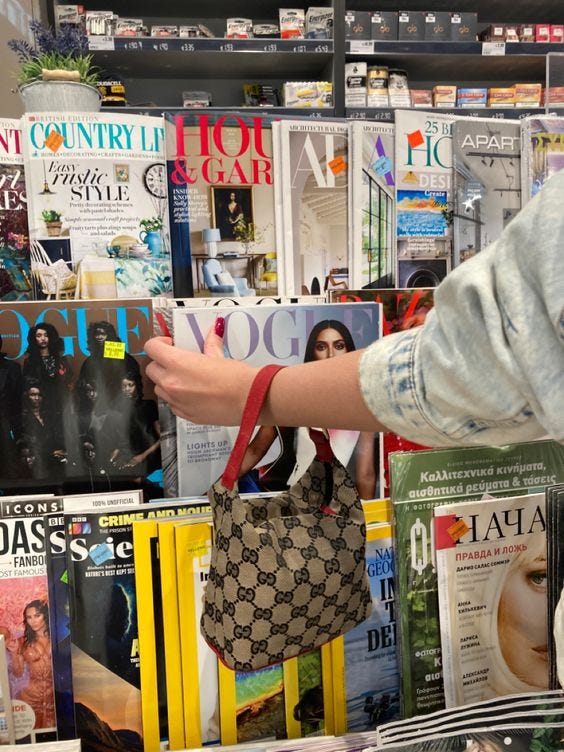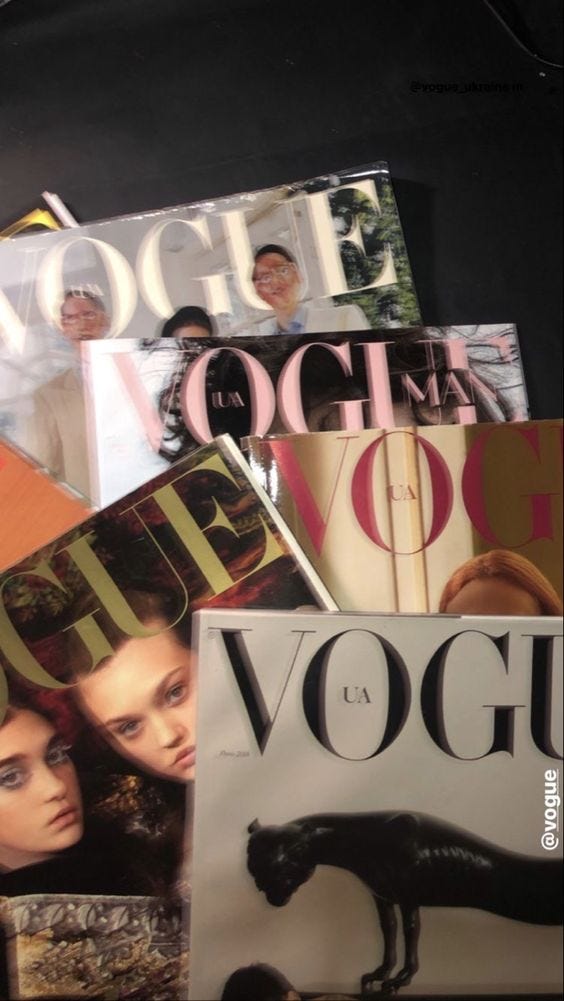are magazines making a comeback or becoming a nostalgic memory
why we still love flipping glossy pages
magazines—the word itself evokes a certain nostalgia, doesn’t it? remember watching our moms feeling flipping through those glossy pages or finding magazines in thrift stores via the smell of fresh ink, the sound of paper rustling between your fingers? there is something almost ritualistic about sitting down with a magazine—whether in a cozy nook at home, on a sunlit park bench, or in the waiting room of a doctor's office. but, as we inch closer to the middle of the 21st century, it seems that this ritual is fading, slowly being replaced by the swift, unyielding current of digital content.
there’s an undeniable charm to magazines that the digital world, for all its convenience and accessibility, simply can’t replicate. they were more than just a collection of articles and photographs; they were curated experiences, crafted with care and intention. each issue was a snapshot of the cultural zeitgeist, a tangible record of the trends, ideas, and conversations that defined a particular moment in time. to read a magazine was to be part of a larger dialogue, to engage with the world in a way that felt both personal and communal.
yet, as we all know, the world has changed. the advent of the internet brought with it an explosion of information, available at our fingertips 24/7. social media platforms have transformed the way we consume content, shifting our attention spans from deep, immersive reading to quick, bite-sized snippets. the algorithm dictates what we see, curating our feeds based on our preferences, likes, and shares. in this new landscape, magazines, with their fixed monthly or quarterly schedules, seem almost quaint, relics of a slower, more deliberate era.
but is this shift solely about technology, or is there something deeper at play? perhaps it’s also a reflection of our evolving relationship with time. in the fast-paced world we live in, time is a commodity more precious than ever. we’re constantly juggling work, relationships, hobbies, and self-care, all while trying to stay informed and connected. the idea of sitting down with a magazine for an hour or two can feel like a luxury we simply can’t afford. we opt for the quick scroll, the instant gratification of a headline or a meme, rather than the slow burn of a well-crafted article.
there’s also the question of relevance. magazines, once the arbiters of taste and culture, now find themselves competing with an endless stream of content creators, influencers, and bloggers. in a world where anyone with a smartphone can share their thoughts and ideas with a global audience, the authority of the magazine has been diluted. the gatekeepers of culture have been replaced by a decentralized network of voices, each vying for attention in the crowded digital marketplace.
yet, despite these challenges, there’s something resilient about magazines. they’ve adapted before—surviving the advent of radio, television, and even the early days of the internet. and they’re adapting again. many magazines have embraced the digital world, launching websites, apps, and social media channels to reach new audiences. some have gone even further, experimenting with multimedia content, podcasts, and video to stay relevant in a rapidly changing landscape.
but the question remains: can magazines survive in their traditional form? or will they eventually become a niche product, cherished by a small, devoted audience, while the rest of the world moves on? it’s hard to say. but perhaps the real value of magazines lies not in their ability to keep up with the latest trends, but in their capacity to offer something different—a moment of pause in an otherwise hectic world, a chance to slow down, reflect, and engage with ideas in a deeper, more meaningful way.
in the end, maybe it’s not about whether magazines are dying, but rather how we, as readers, choose to engage with them. do we make time for the things that matter, or do we let them slip away in the rush of our daily lives? maybe the real art isn’t in the magazine itself, but in the act of reading it—of carving out a little space in our lives for something that feels, in a world of constant noise, refreshingly quiet.







It feels like magazines were the creative equivalent of newspapers. They still had valuable insights but added an aesthetic look and feel.
Now, with social media, this has become irrelevant. Social media is everything everywhere, all at once. It's both news articles and Instagram accounts of aesthetic content with valuable insights.
I hope magazines will never disappear because, as you say, there is some nostalgia behind them.
Nevertheless, for brands, investing in social media ads might be more valuable (data-wise), making it harder for magazines to make a lot of money.
Will some magazines die? Yes, probably. Will the medium completely disappear? I don't think so (but I'm unsure whether this is hopium).
It feels tough for print magazines to compete with the minute-by-minute relevancy of the digital world. However, I think that as people get fatigued from the doom scroll print has an opportunity to feel more like a sanctuary and creative space, with editorial and long form content.